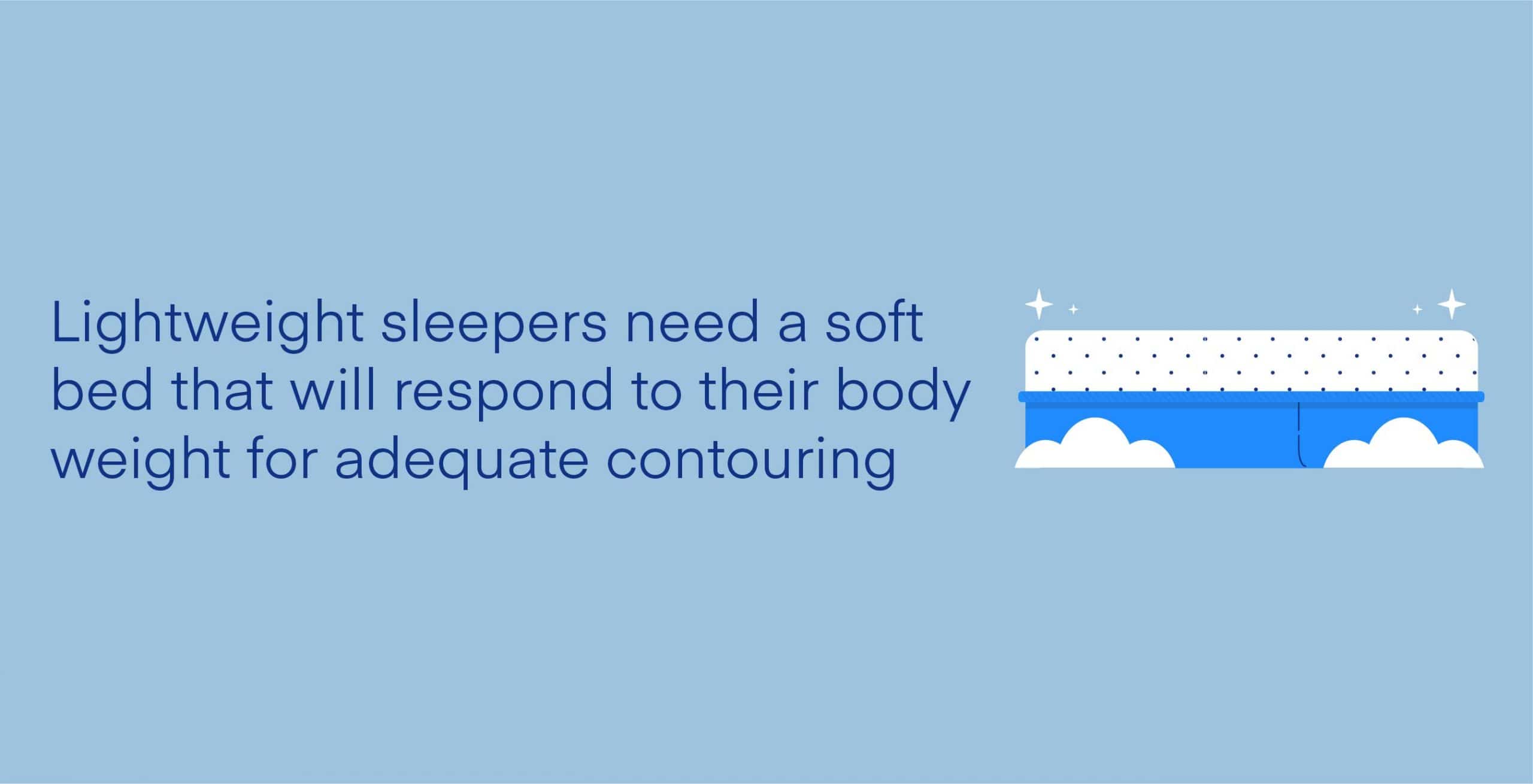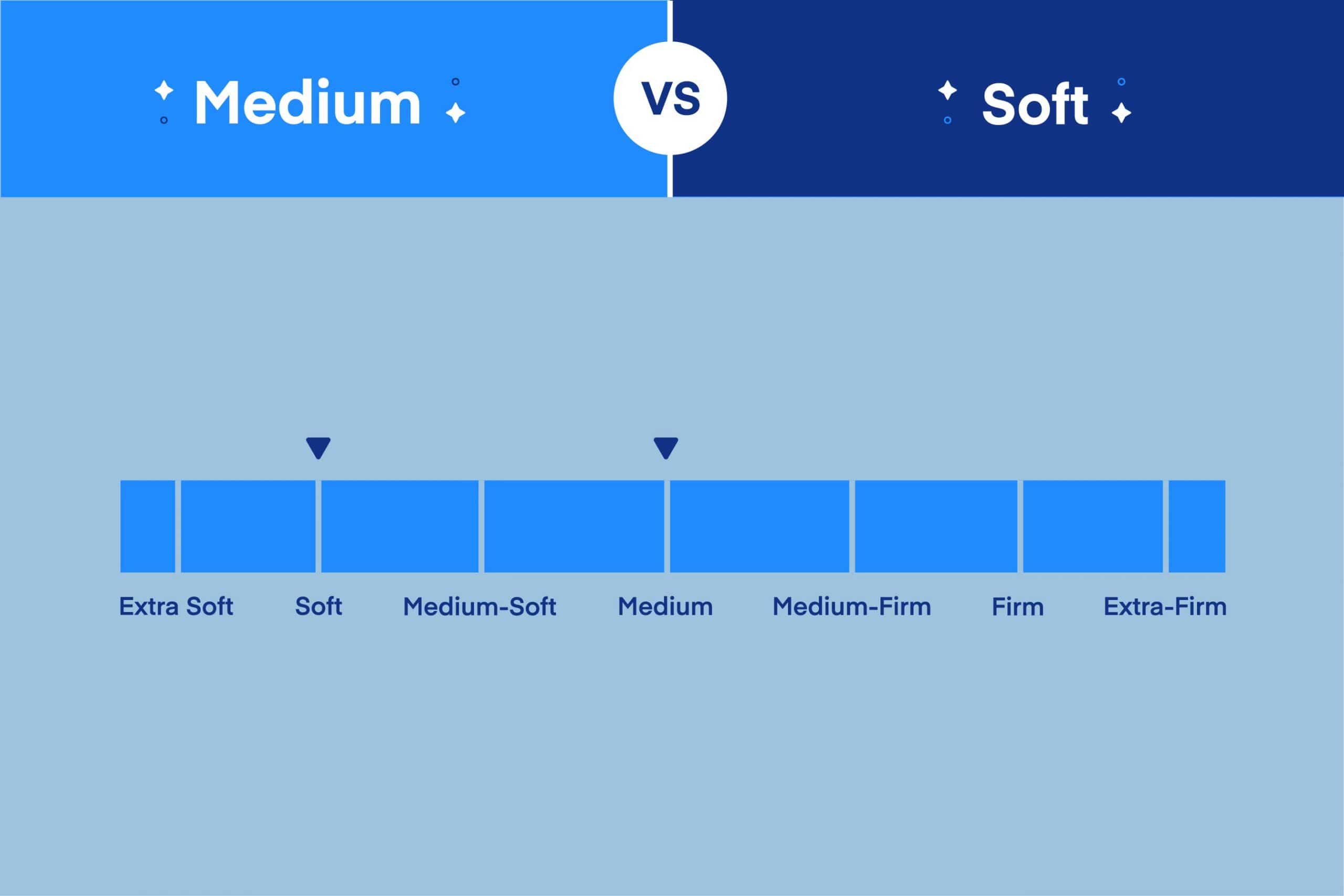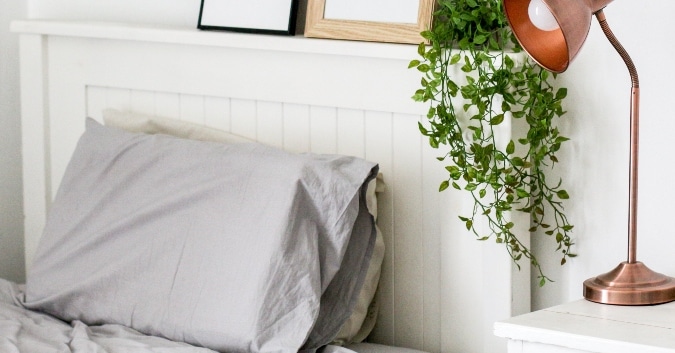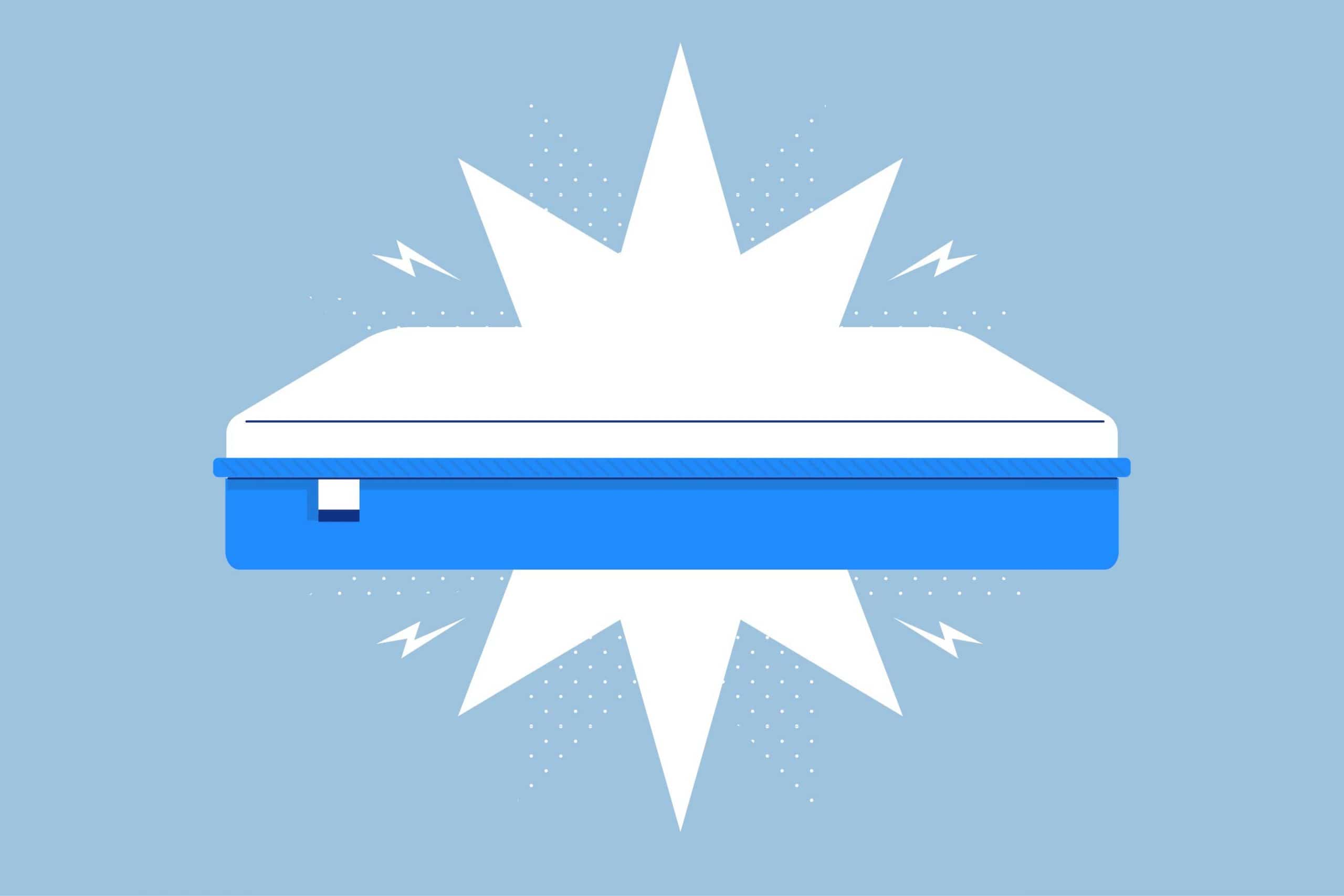The mattress you rest on each night plays an important role in the quality of your sleep. If you frequently wake up in the middle of the night with sore muscles or feel unrested throughout the day, your bed may not be supporting you correctly. Based on your body type and preferred sleep position, you need a certain mattress firmness so your muscles can fully relax. When you are resting in a healthy, tension-free position, you’re more likely to sleep soundly and wake feeling refreshed.
Whether you are a side, back, stomach, or combination sleeper, there is a mattress designed for your specific needs. Throughout this article, we will help you determine the level of comfort that is right for you, whether it be firm or soft.
What Makes a Comfortable Mattress?
When you climb into bed at the end of a long day, you want a mattress that feels comfortable and inviting. You also want a bed that will cushion your pressure points and keep your spine in a safe, neutral position. When resting on a supportive and even surface, the tension that builds-up in the body throughout the day can finally dissipate—leaving your muscles in a more relaxed state.
As you relax, it is vital that the heaviest parts of the body, such as the hips and shoulders, don’t sink too far into the bed. If this happens, the spine will be forced out of alignment—resulting in pain and stiffness upon waking.
By taking your body weight into account, you can determine that correct firmness level for you. Lightweight sleepers tend to need a softer surface to experience more contouring, while heavier sleepers need a firmer bed to prevent sinking.
However, your body weight isn’t the only thing to consider when deciding between a firm and a soft mattress. Throughout this article, we take an in-depth look at the advantages and disadvantages of both firm and soft beds.
What’s the Difference Between a Firm and Soft Mattress?
When shopping for a new mattress, you have likely noticed that each one comes with a “firmness level.” But, how is this level determined? Many brands rely on a standard firmness scale from 1 to 10—with 1 being the softest and 10 being the firmest. Firm and soft mattresses are at opposite ends of this scale. That said, you’ll rarely find mattresses rated as a 10 or a 1 because those are extremely firm and extremely soft beds that aren’t commonly made.
A firm mattress rates between a 9 and a 7 on the firmness scale. These beds have very little give, so the surface tends to remain even and allows for little sinking.
A soft mattress rates between a 2 and a 3 on the firmness scale. These beds compress quickly and easier when pressure is applied. Most sleepers experience some level of sinking when resting on a soft bed.
Mattress Types and Firmness
Different types of mattresses utilize different materials, which can also affect the firmness. The following are the four most common mattress styles and the firmness levels you can expect with each.
- Memory Foam Mattresses: Memory foam is available in several different firmness options. Depending on the manufacturing process, memory foam can be either soft or extra firm. When shopping for a memory foam bed, look at the type of memory foam used and the layers supporting it to determine the firmness it will provide.
- Latex Foam Mattresses: There are two types of latex foam—Dunlop and Talalay latex. Dunlop tends to have a firmer firm, and these beds are typically considered medium-firm. Talalay latex is generally treated with additives to give it a soft to medium feel. Both materials have a natural elasticity that offers a slight bounce.
- Hybrid Mattresses: Hybrid mattresses have a stable coil base and a foam comfort layer. The type of foam used in the top of the bed will determine the firmness you will experience.
- Innerspring Mattresses: The coil springs in the base of an innerspring bed give it a firm feel. These beds tend to have a thinner comfort layer, so they are classified as either medium-firm or firm.
Advantages of a Soft Mattress
When you rest on a mattress, there is usually some space between your body and the surface of the bed. For some sleepers, this open space can leave certain areas of the body unsupported. On a soft mattress, the material quickly forms to the body like a glove, ensuring that every curve is protected. A soft bed comes with the following advantages.
Suitable for Side Sleepers
When side sleeping, the hips and shoulders bear the brunt of the body weight. Resting on a firmer mattress can cause pressure to build up near these sensitive areas. This tension could force you to toss and turn to find comfort—resulting in lost hours of sleep. We usually recommend soft mattresses for side sleepers because they will keep the body cradled and supported to alleviate tension.
Since some soft mattresses tend to promote sinking, be sure to select one that has enough responsiveness to keep the torso lifted, so the spine remains neutral.
Suitable for Lightweight Sleepers

Whether resting on their side, back, or stomach, lighter individuals (those 130 pounds or less), will naturally experience very little sinking. If these individuals sleep on a firm mattress, tension can build-up near the pressure points—creating pain and stiffness. Lightweight sleepers need a soft bed that will quickly respond to their body weight for adequate contouring.
Comfortable for Those With Arthritis and Joint Pain
Those with arthritis and joint pain tend to find relief with a softer mattress that cushions sensitive areas. If these sleepers rest on a firm mattress, it could force the body into uncomfortable sleep positions that exacerbate pain.
The spine should also be kept in a neutral position to alleviate tension. Therefore, the torso must not sink too far down. If you are a heavier sleeper with arthritis, you may be more comfortable on a medium mattress.
Reduces Pressure Points
A firmer mattress can sometimes cause pain and pressure to build-up along the curves of the body. With a soft bed, this is less likely to happen. Whether an all-foam or hybrid style, soft mattresses will cradle pressure points to alleviate tension and reduce pain.
Drawbacks of a Soft Mattress
Soft mattresses often promote sinking. However, if certain parts of the body fall too far, the spine’s natural curve could become exaggerated. Therefore, it is best to look for a soft bed with a response layer that gives the body a slight lift, so the spine remains neutral.
Since soft beds contour so closely to the body, they can also cause overheating. When shopping for a soft mattress, be sure to select one with cooling properties, such as breathable, plant-based foam, cooling gel microbeads, or copper infusions.
Advantages of a Firm Mattress
A firm mattress keeps weight evenly distributed, so no one part of the body needs to bear all of the pressure. Since these beds offer very little sinking, the spine is more likely to remain in a safe, neutral position. A firm mattress comes with the following advantages.
Suitable for Back and Stomach Sleepers
When resting on the back, the hips and buttocks tend to sink. If the mattress is too soft, these areas may sink excessively—resulting in a misaligned spine and tense muscles. Back sleepers tend to sleep best on a firmer bed that will prevent sinking and keep the hips in line with the shoulders and head. When the spine is neutral, the body can fully relax and repair.
Our spines naturally curve, but when sleeping the stomach, this curve can become exaggerated. Over time, the pressure this position places on the back and neck can lead to chronic pain. In most cases, it is best to avoid stomach sleeping. However, if you find it difficult to avoid this position, the best mattresses for stomach sleeping are firmer. A firm bed will keep the hips lifted to reduce the pressure on the spine.
Suitable for Heavy Sleepers
Those over 230 pounds will experience more sinking than a lightweight sleeper. If the mattress is too soft, a heavier person will sink too far and hit the harder support base on the bottom of the bed. Resting on the hard core of the bed could cause pain near the pressure points.
Additionally, sinking can cause the sleeper to feel stuck in the bed, making it difficult to change positions during the night. This restricted movement could also lead to poor circulation and trouble breathing. With a firm mattress, the lungs can expand and blood can flow freely.
Prevents Overheating
A soft mattress will naturally offer more insulation as it molds to the body. If you’re a hot sleeper, a soft mattress could cause overheating and sleep interruptions. Firm beds allow more air to flow across the surface of the bed, so you are less likely to wake due to night sweats.
Improves Circulation
The close contouring that comes with a soft mattress could restrict movement, and, therefore, circulation. If you suffer from heart disease or diabetes, a firmer bed is the best option. A firmer surface will keep the body lifted, rather than sunk, allowing for more blood flow and healing.
Drawbacks of a Firm Mattress
A firm mattress is not for everyone. Side sleepers may experience pressure build-up along the sides of the body on a firm bed. Lightweight individuals may not experience enough sinking on a firm mattress—causing spinal misalignment and muscle tension.
A firm bed may help support the lumber and relieve lower back pain. However, those with arthritis and joint pain need a mattress that will hug the curves of the body for pressure relief.
Firm vs. Soft Mattress Overview
A firm mattress is best for….
- Heavy sleepers (those over 230 pounds)
- Back sleepers
- Stomach sleepers
- Hot sleepers
A soft mattress is best for….
- Lightweight sleepers (those less than 130 pounds)
- Side sleepers
- Those with arthritis and joint pain
- Those in need of pressure relief and contouring
Frequently Asked Questions
How do I know if my mattress is too firm?
If you are a side sleeper, look for the following signs to determine if your mattress is too firm.
- You experience pain and stiffness near pressure points, such as your hips and shoulders.
- Your arms quickly fall asleep with little pressure.
- You frequently wake with back pain due to a misaligned spine.
Back sleepers tend to benefit from a firmer mattress. However, if you can place a hand between the lumbar (the lower curve of the spine) and the mattress, you may want a bed with a bit more softness, such as a medium-firm bed.
Do firm mattresses get softer?
If your mattress is firmer than you expected, it may soften up over time. Some mattress materials, such as memory foam, respond to pressure and body heat so they can soften up a little. However, innerspring beds are made of spring coils and have very little foam, so they will not become softer with use.
Are firm mattresses bad for side sleepers?
Side sleepers need a mattress that offers pressure point relief while also keeping the body supported. A soft to medium mattress is typically a good option for side sleeping. When decided between a soft or a medium mattress, be sure to consider your body weight. If you are under 130 pounds, a soft to medium comfort level will offer you more contouring. If you are over 230 pounds, a medium firmness will cradle pressure points and prevent sinking.
How can I make my bed more firm?
You can change the feel of a mattress by adding a topper. Memory foam toppers can be used to add softness or firmness to your bed. At Amerisleep, our Lift Memory Foam Topper comes in two different firmness levels—Support and Comfort. If you are looking to add firmness to your current mattress, the Support topper has a firmer feel and helps create an even sleeping surface. The Comfort topper offers more cushioning for those looking to add softness to a bed.
Is a soft mattress good for back pain?
The best mattress for back pain is one that promotes a healthy spinal position. When the hips and shoulders are in line, the muscles in the back can relax. A medium-firm to firm mattress offers the most relief from back pain.
Can I test out the mattress and return it if it’s not right for me?
Many online mattress companies offer free sleep trials that allow you to rest on the bed for up to 100 nights. If you decide the mattress is not supporting you correctly, they will issue a full refund or exchange. With a free trial period, it is easy to make sure the mattress is right for you.
Conclusion
Without proper rest, you may feel run-down, irritable, and groggy. Plus, lost hours of sleep can lead to slower cognitive function, poor decision making, and a compromised immune system. The first step toward a good night’s sleep is a comfortable and supportive mattress. As you shop, be sure to keep your personal preferences in mind, as well as your body type and sleep habits. A mattress suited to your needs will help you sleep soundly throughout the night and wake ready for the day.
About the author
Mitchell Tollsen is a graduate student and a freelance writer who’s contributed to the Early Bird blog for three years. Mitchell’s always been fascinated by the science of sleep and the restorative processes our bodies undergo when at rest. The self-titled “Sleep Expert” is always looking for ways to improve his shut-eye, and throughout the years has implemented numerous lifestyle changes and tried dozens of sleep-promoting gadgets to determine the best ways to truly get better rest.
View all posts





